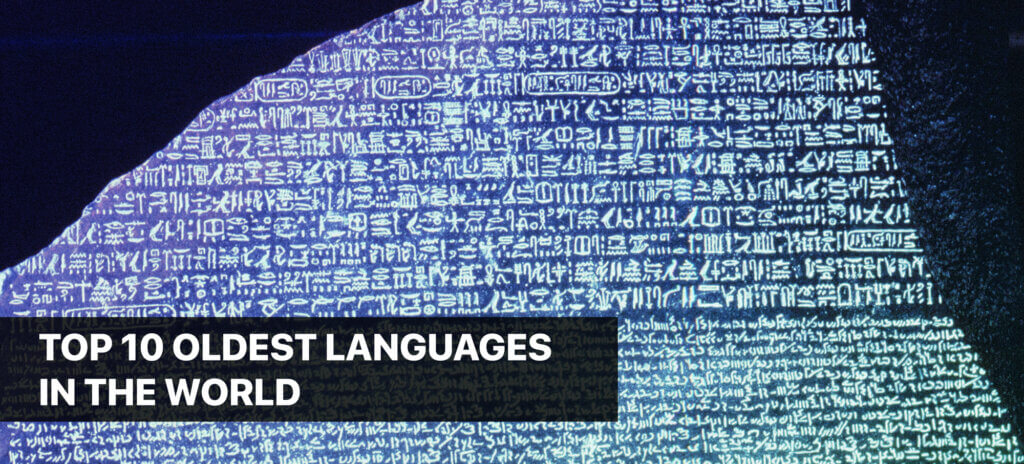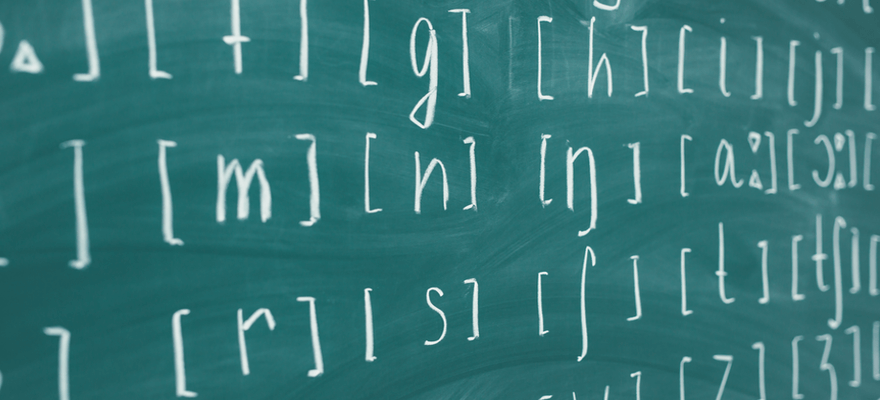
There are more than 7000 languages spoken in the world today. But this number doesn’t begin to scratch the surface of all the languages that have existed throughout human history. Few are the lucky ones that have survived from antiquity to the modern day. For example, Latin, Sumerian, and Phoenician were all the languages of empires, but none of them stood the test of time.
In this article we will explore ten of the oldest languages in the world still spoken today. While many languages such as Tamil claim to be over 5000 years old and hence the oldest in the world, we’ve focused only on the ones that can back their claims by hard written evidence. Moreover, we’ve excluded languages such as Lithuanian (thought to bear a close resemblance to Indo-European proto language) that for some reason or another have preserved ancient grammatical structures in favor of historically attested ones.
1. Egyptian – c. 3200 BCE
2. Sanskrit – c. 1500 BCE
3. Greek – c. 1450 BCE
4. Chinese – c. 1200 BCE
5. Aramaic – c. 900 BCE
6. Hebrew – 10th century BCE
7. Farsi – 6th century BCE
8. Arabic – 1st century CE
9. Old Irish/Gaelic – 6th century CE
10. Korean – mid-to-late 6th century CE

1. Egyptian
It shouldn’t come as a surprise to see Egyptian at the top of this list. What might be more unexpected, however, is that it’s actually still in use today. First attested in 3200 BCE, Egyptian is over 5000 years old. Today it is primarily used as a liturgical language by the Coptic Orthodox Church meaning the church’s ceremonies and holy texts are based on this language. Though it is no longer written using hieroglyphs but rather the Greek alphabet, Coptic Egyptian is indeed the direct descendant of the language of the pharaohs.
2. Sanskrit
Sanskrit might be the oldest language in the world with a continuous literary tradition. The ancestor of modern Hindi was first attested in a Hindu holy text known as the Rigveda in 1500 BCE. Sanskrit is considered a sacred language by not one but three religions – Hinduism, Buddhism, and Jainism. Today, about 24 thousand people in India identify themselves as Sanskrit speakers, most likely due to the strong literary and religious tradition of the language.
3. Greek
With Greek we are entering into the territory of national languages. Unlike Egyptian and Sanskrit, Greek – which was first attested 1450 BCE – is the official language of the modern Republic of Greece. This makes it the native language of over 12 million people. Greek is a good example of how fluid historical linguistic boundaries can be. Up until the first half of the 20th century it was thought that Greek was no older than 800 BCE. Then archaeologists discovered Linear B – a previously unknown Greek script used by the Mycenean Greeks in Knossos and other parts of the ancient Mediterranean.
4. Chinese
At 3600 years-old, Chinese is still holding strong boasting over a 1.3 billion native speakers. This makes it both one of the most spoken languages in the world as well as one of the oldest. Of course, speaking of ‘a Chinese language’ is rather problematic to begin with. Because of how large and old China is, there are numerous dialects that are practically unintelligible to each other. So, while the 8 dialects of Chinese all use the same ancient writing system, first attested in the Shang dynasty, they are so distinct they can be considered separate languages.
5. Aramaic
The ancient Middle East was a treasure throve of linguistic diversity. Many of the languages that existed in the region are now lost to us, but a few still remain. Aramaic is a Semitic language written – like most of its family – from right to left and first attested 900 BCE. It was one of the most important ancient Middle Eastern languages and the lingua franca of the vast Assyrian Empire. It even, at one point, supplanted Hebrew as the everyday language of the Jewish people. Today about 1 million people in the region speak one or more of its modern variations.

Love languages but don’t have enough time to learn one from scratch? EWA is here to help! Learn on the go with TV shows, audio books, and even memes. Give EWA a try – it’s free!
6. Hebrew
Speaking of Hebrew, no list of the oldest languages in the world can be complete without it. Since the 10th century BCE this Semitic language has been the sacred tongue of the Israelites. As the language of the Hebrew Bible (Old Testament), it survived well into the 19th century primarily through its use in Jewish religious ceremonies. Then something amazing happened – Hebrew went from a practically extinct language to a modern, widely spoken one. Thanks to the Zionist movement, Hebrew was revived, modernized and later instated as an official language of Israel. Today it is spoken by over 9 million people around the world.
7. Farsi
Farsi is a prominent representative of the Indo-Iranian leg of the Indo-European language family. First written down in the 6th century BCE it is the language of some of the most beautiful literature in the world. The Rubaiyat of Omar Khayyam and Hezar Afsaneh (One Thousand Stories – the precursor to the famous Thousand and One Nights) are just some examples of the rich Persian literary canon. Today, Farsi is the official language of Iran with over 62 million speakers. Like Arabic it is written from right to left, though numerals are written left to right.
8. Arabic
Variations of the Arabic language were long spoken in parts of the Arabian Peninsula. But it wasn’t until about 2000 years ago that this language was written down. Today over 360 million people in the Middle East, Africa, and Asia call Arabic their mother tongue. The standard written variation of the language people learn at school nowadays is a direct descendant of classical Arabic developed during the Middle Ages when science, philosophy, and literature flourished in the Middle East. Just like Hebrew and Aramaic, Arabic is a Semitic tongue written in right-to-left abjad.
9. Old Irish/Gaelic
For many native English speakers, Irish is a familiar other. What many don’t consider, however, is how ancient this language is. In fact, Gaelic (commonly known as Irish today) is one of the oldest languages in the world and has been around since at least the 6th century CE. During its earliest days it was written using the ogham script also known as ‘Celtic tree alphabet’ because of the shape of its 20 symbols. Today, Irish is written with Latin characters and spoken by 1,2 million people mostly in the Republic of Ireland.
10. Korean
Last but not least, we have Korean. Roughly as old as Old Irish, Korean was first written down in its own distinct alphabet in the mid-to-late 6th century CE. Back then it was the lingua franca of the kingdom of Silla, which ruled over the Korean peninsula. Interestingly, the earliest texts in the language are 12 hyangga or local folk songs that were written down to facilitate performance. With over 75 million speakers today Korean might be on the verge to breaking up into two new languages. Due to 70 yeas of hostilities, the Northern and Southern varieties of the are growing more and more apart and may soon become 2 different languages.
Languages are portals to different times and places. Learning a new language allows you to travel back in time, to explore distant cultures and traditions. But too often today it’s hard to find the time and motivation to start on such a journey. At EWA we’re committed to making learning a new language fun and accessible to all. With our unique platform, you can immerse yourself completely by watching TV shows, listening to audio books, and having a laugh – all while soaking up useful new rules and vocabulary. Click the link below to register and start learning for free with EWA.

